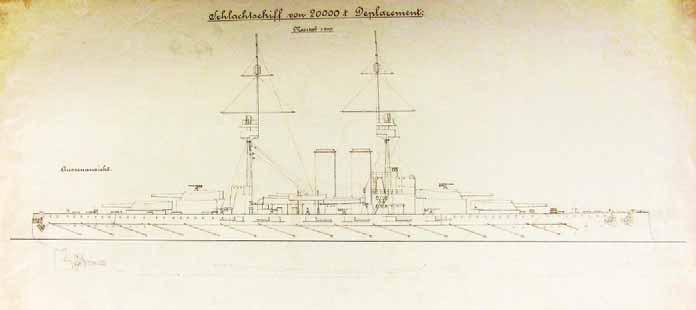The commander of the Szent István in his report dealt with the secondary battery most elaborately. He wrote that the ventilation of the 15 cm casemates was insufficient when the hatches were closed on the Oberdeck. He complained that the casemates were not fitted with a dedicated ventilation system and fresh air could only be supplied through the gunports, but often only smoke and propellant gases were sucked into the casemates through these ports. The other commanders did not mention this ventilation problem. Linienschiffskapitän Teuschl, the commander of the Viribus Unitis wrote in his report that usually some hatches were open when the 15 cm guns were firing because the spent cartridges were transported through these hatches to the Oberdeck. Grassberger considered the communication of the fire data and the use of the gunsights of the 15 cm guns difficult, Teuschl had similar views.329 Grassberger criticized the armor scheme of the ship which he considered outdated and vulnerable to plunging fire and aerial bombs. He condemned the lack of armored gratings in the funnels and ventilation ducts. He considered the ventilation in general insufficient and proposed a totally new concept of ventilation for the future battleships. He complained about the ventilation and cable ducts which horizontally passed through main watertight bulkheads. In fact, this practice was accepted by the MTK and the Arsenal and the bulkheads of
the Trieste built units were similarly constructed. He wrote that on the Tegetthoff s too many watertight doors were cut in the watertight bulkheads which threatened their watertightness. On the Szent István, he added, even more doors were cut, because the transverse bulkhead which separated the fore and the aft turbine rooms were pierced by two doors which could not be closed remotely. Grassberger did not mention that the three STT built dreadnoughts had not been fitted with similar transverse watertight bulkheads in their turbine rooms. On the boilers of the Szent István he wrote that in contrast to the STT made boilers they could provide enough steam for the turbines. After his remarks on the boilers Grassberger wrote a lengthy explication of his views on the training of stokers.330 Grassberger’s report was similar in many parts to the other commander’s reports because they all criticized the common flaws of the Tegetthoff class: the weak construction of the hull and the watertight bulkheads, the insufficient ventilation, the low freeboard, the bad and outdated shape of the bow which rendered the ships very wet even in calm weather and the uncomfortable and crowded crew compartments. He as the other commanders considered the bow and the stern submerged torpedo tubes entirely superfluous. Grassberger’s report differed from his colleagues’ chiefly in its style, which was characterized by pedantry so typical of him.331
Technical data of the Tegetthoff class Length on waterline: 151 m Overall length: 152.18 m Beam: 27.99 m Draught: 8.59 m Displacements Normal or trial: 20,013 metric tons (20,008 metric tons) Full load: 21,595 metric tons (21,689 metric tons) Weights (Viribus Unitis, calculation from August 1912332) Hull: 5,313 tons (25.8 %) Equipment and provisions: 1,488 (7.2 %) Armament including gun turrets: 3,327 tons (16.2 %) Ammunition: 902 tons (4.4 %)
Machinery: 1,486 tons (7.3 %) Electric power plant and equipment: 349 tons (1.7 %) Vertical armor: 5,103 tons (24.8 %) Deck and torpedo protection: 1,686 tons (8.2 %) Fuel: 900 tons (4.4 %) Total: 20,554 metric tons Machinery Twelve coal firing Yarrow water tube boilers with oil spraying (Twelve coal firing Babcock-Wilcox water tube boilers with oil spraying and superheaters) Boilers in two boiler rooms, two funnels Two sets of Parsons-turbines on four shafts
— 93 —






























